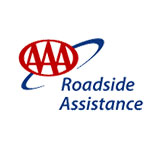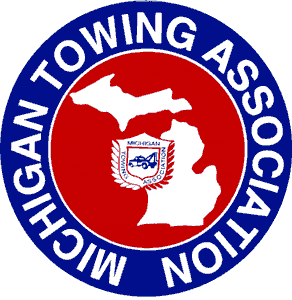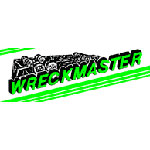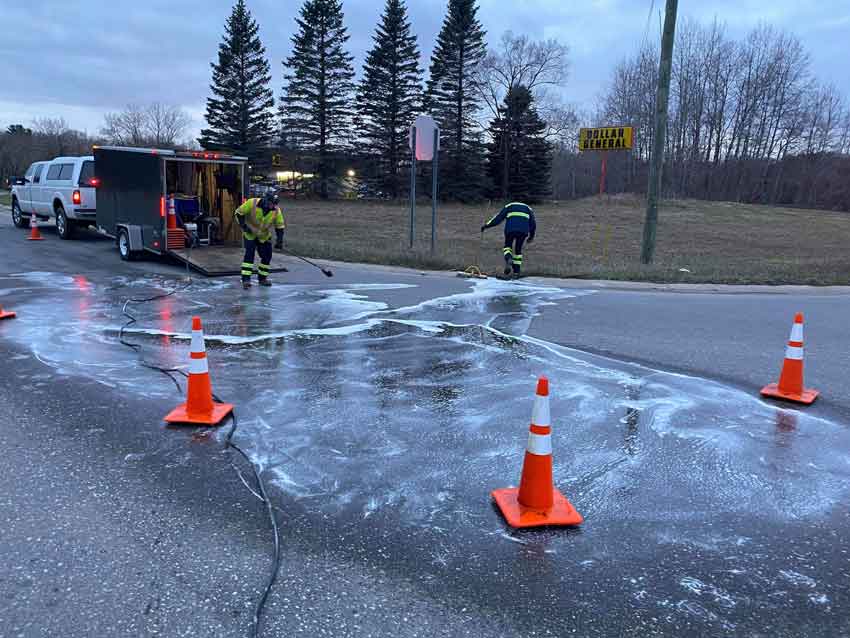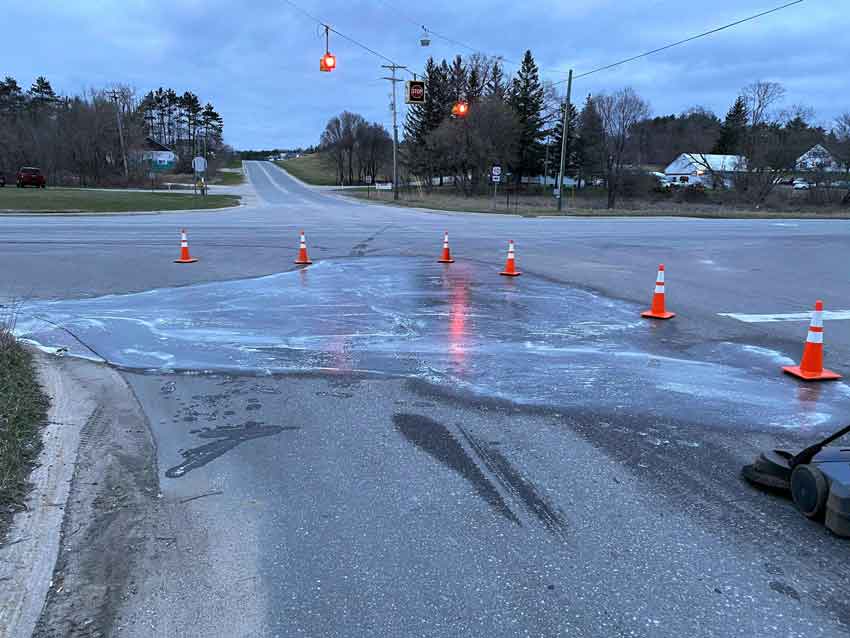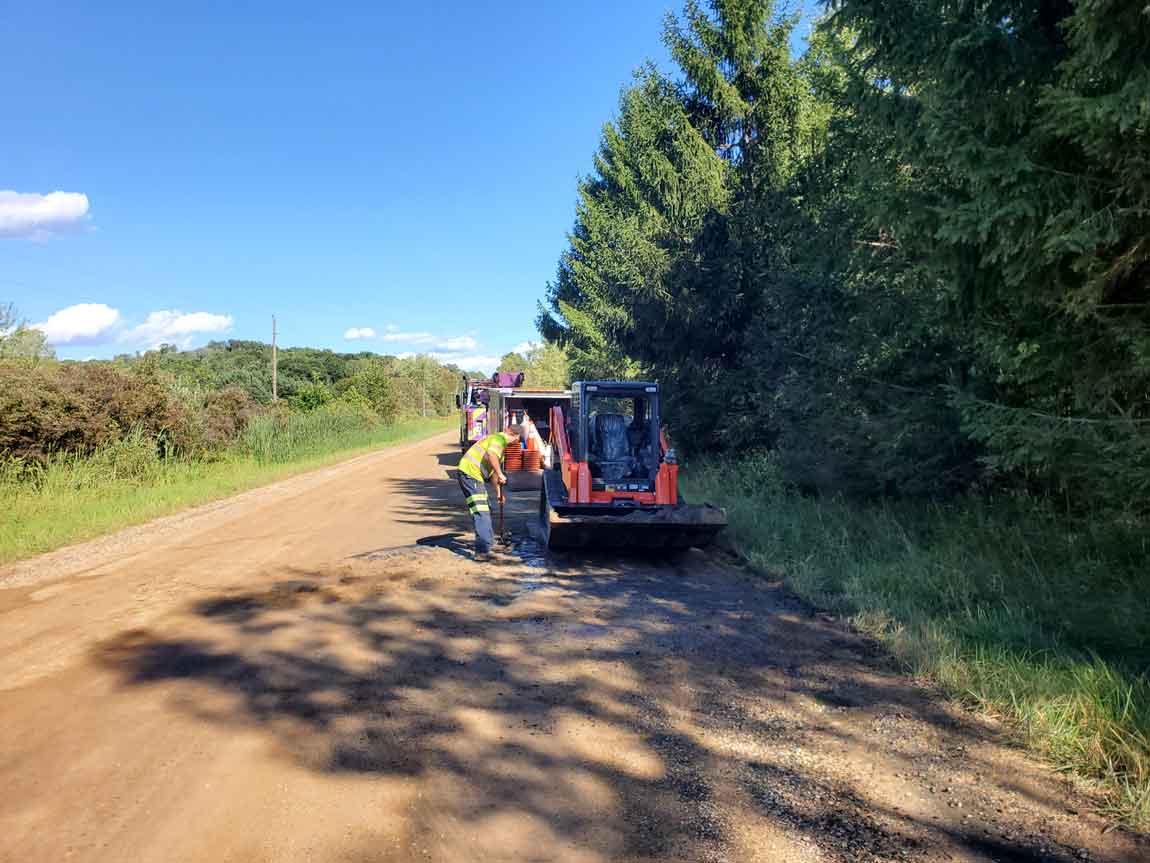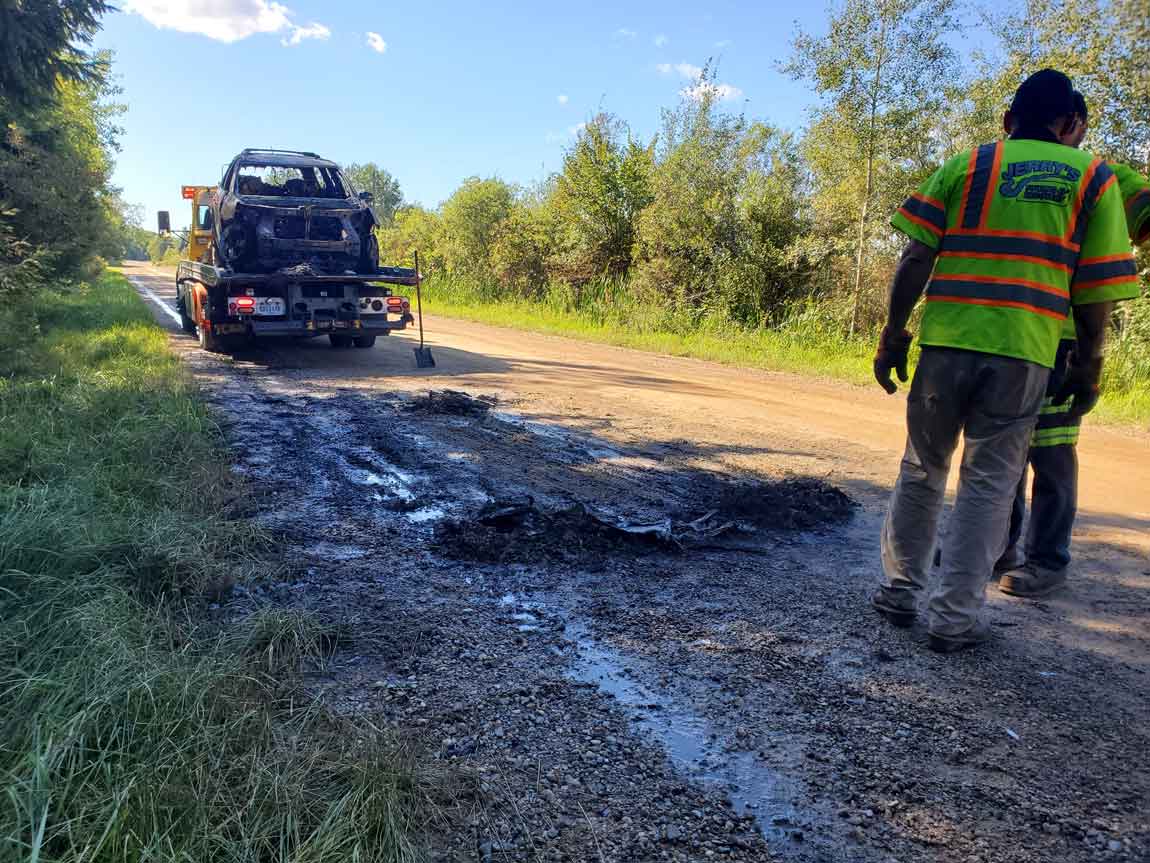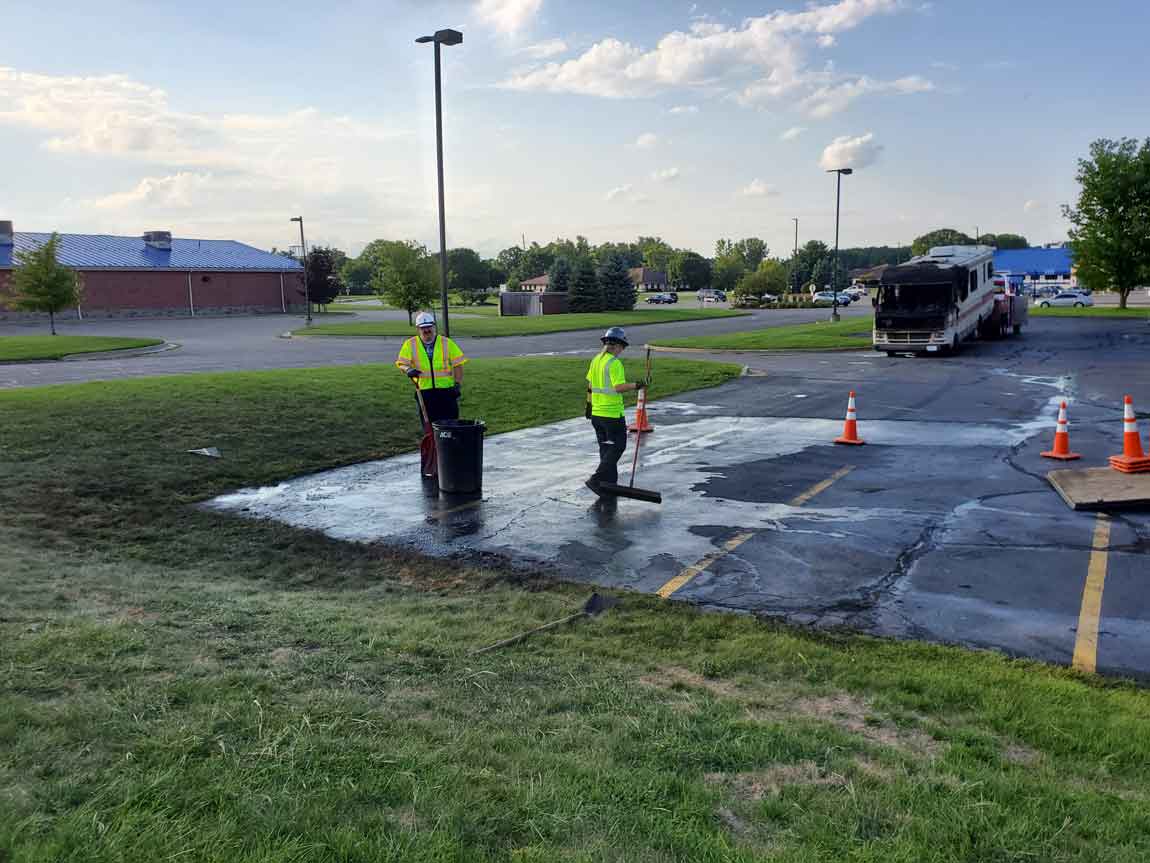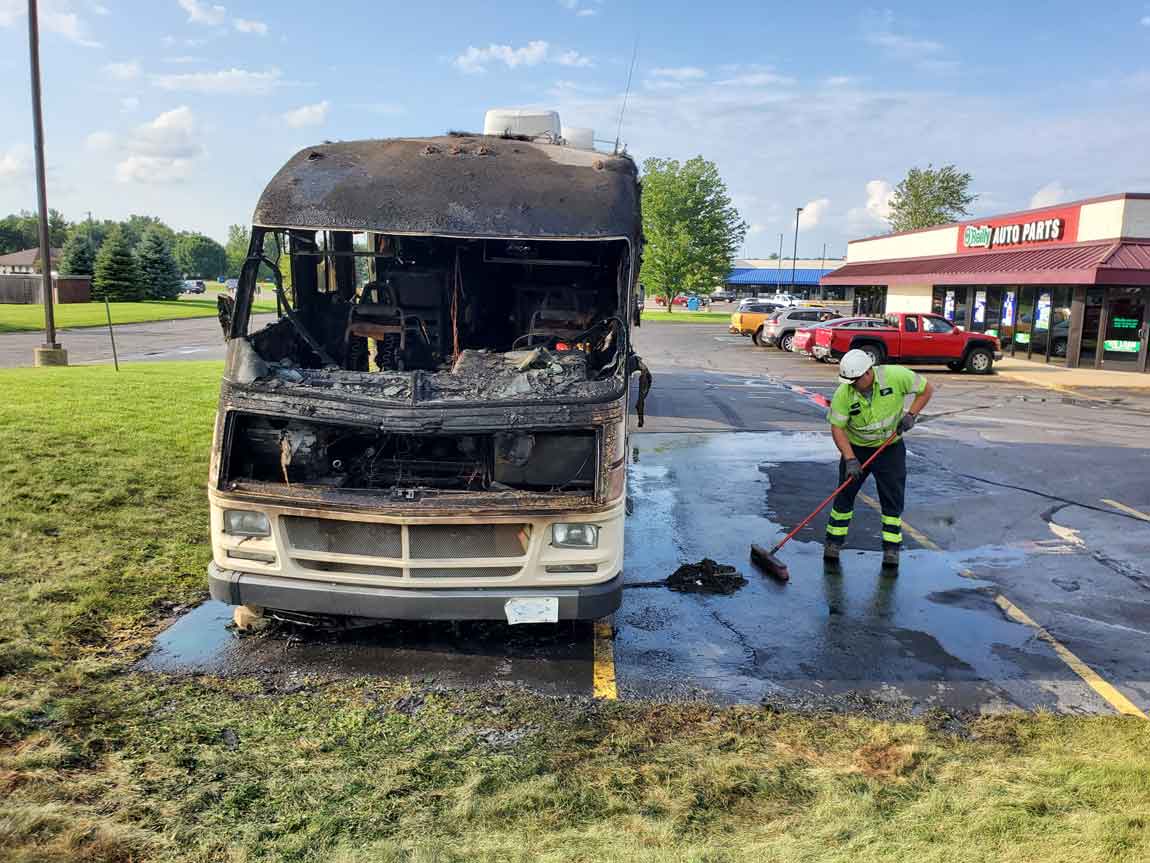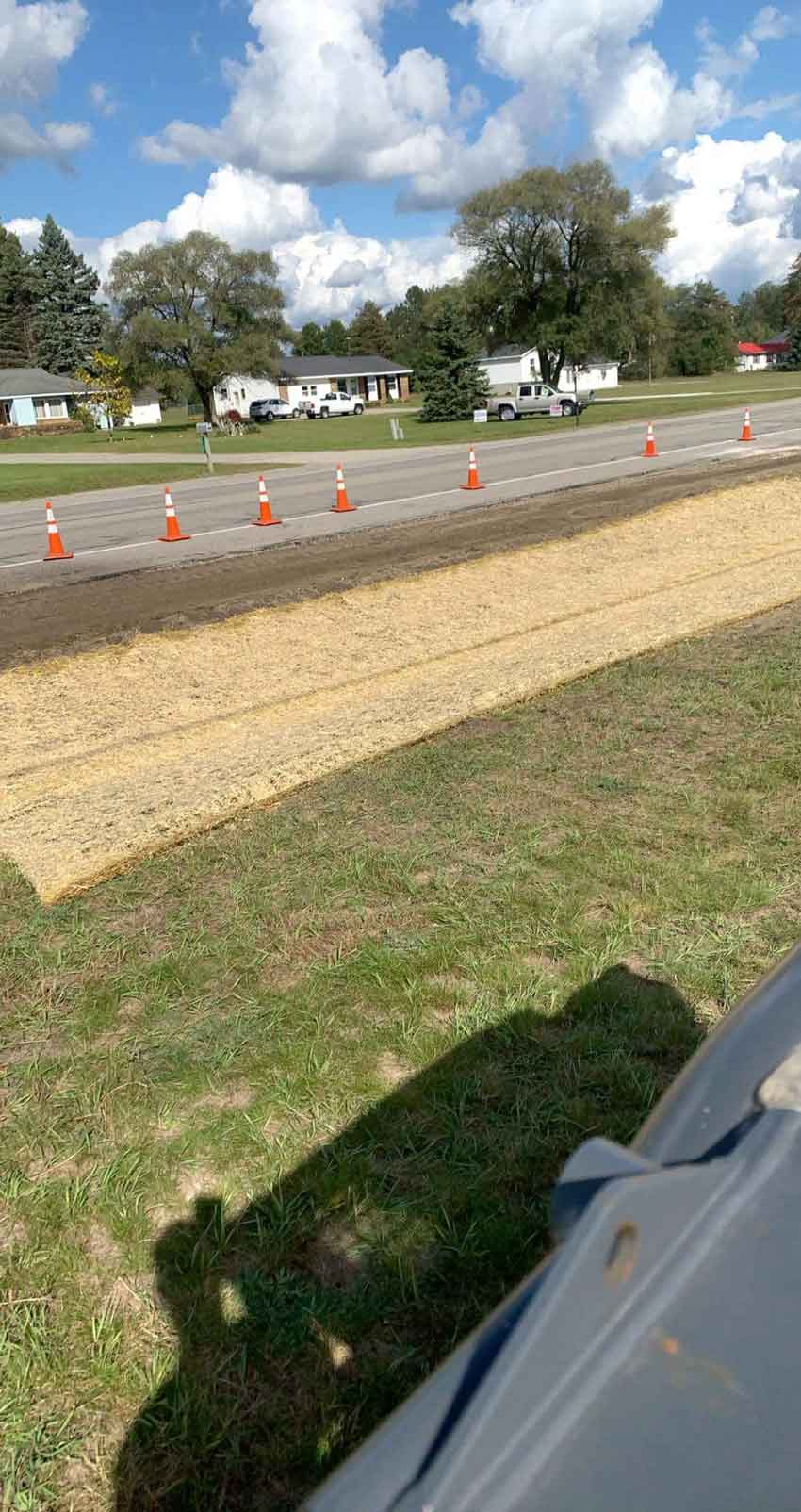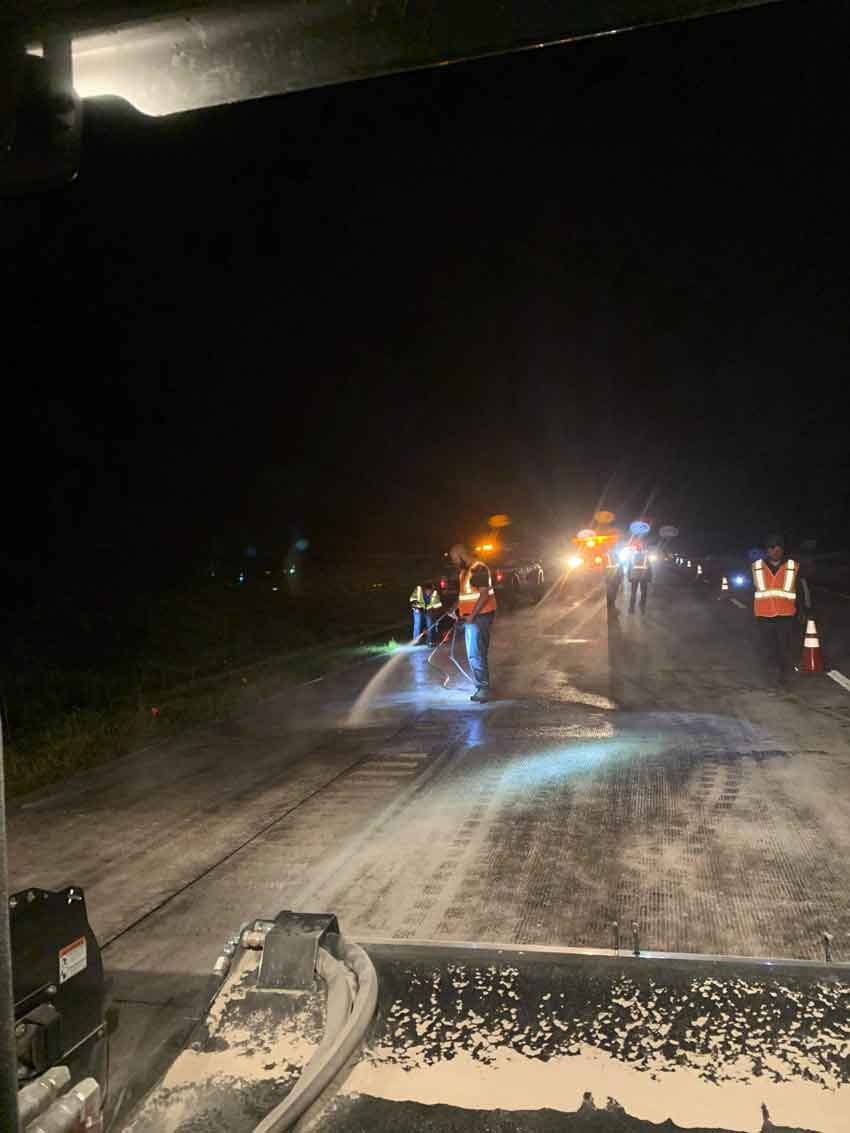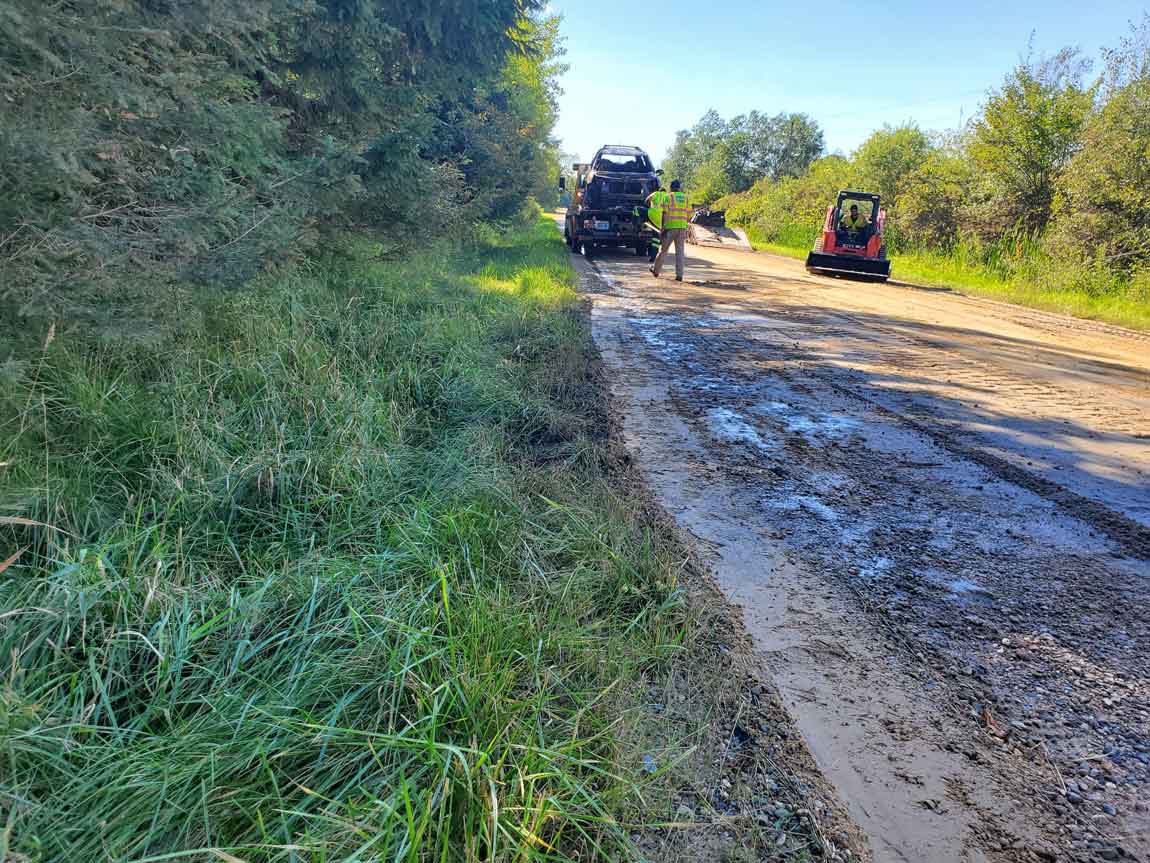Western Michigan Transport HAZMAT Cleanup
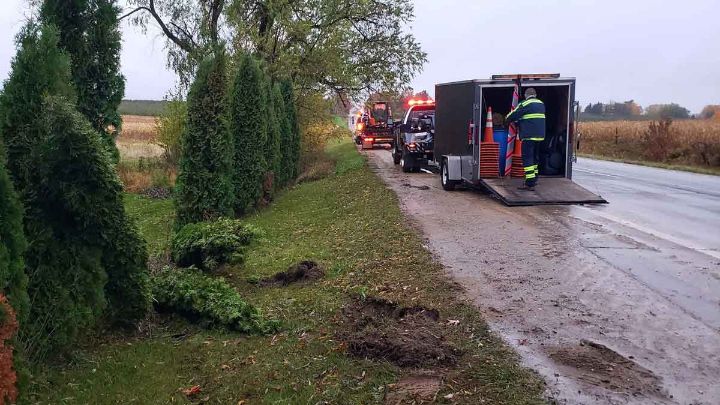
West Michigan Spill Response is the leading provider of HAZMAT Cleanup, Site Remediation and Contaminated Spill Cleanup in Western Michigan. With a fleet of Emergency HAZMAT Response Vehicles and a team of six HAZWOPPER 40 Certified Cleanup Technicians, you can count on us to resolve your West Michigan Hazmat Spill Cleanup needs.
Every member of our Hazmat Response Team is certified to follow the Hazardous Waste Operations and Emergency Response Standard. This standard was established to provide protocols to ensure the safety of the response team and to mitigate further liabilities by the responsible party. We are dedicated to ensuring you have the best possible outcome from your material spill. Contact our 24hr HAZMAT Spill Response team now at (800) 974-2175.
Looking for a HAZMAT Cleanup Team? A hazardous material is any substance in a quantity or form with the potential to cause harm to humans, animals, or the environment, either by itself or through interaction with other factors. The goal at West Michigan Spill Response is to safely and effectively clean up these spills to avoid further damage to the surrounding environment.
West Michigan Spill Response is a part of the Baker Towing Group. Our group of companies owns and operates over 100 pieces of towing, recovery and remediation equipment. With our entire fleet at our disposal, we can deliver seamless and expedited recovery to all accidents, spills and HAZMAT situations.
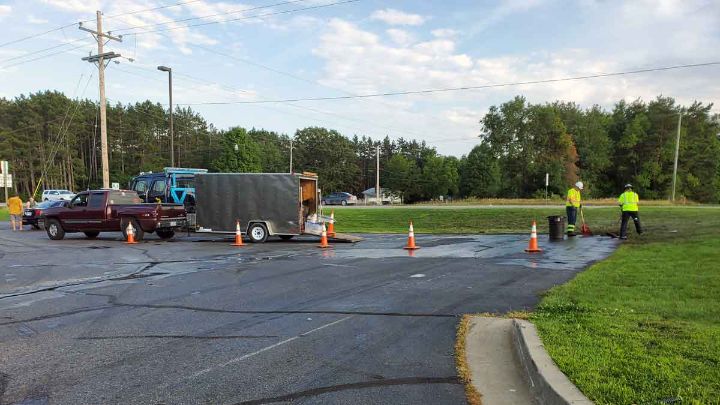
What constitutes as a HAZMAT spill?
Many HAZMAT spills are the result of vehicle accidents. Both transported material spills and system fluid leaks can require a HAZMAT Cleanup response. Radiators, brake lines, hydraulic lines, fuel spills and oil spills are all triggers for cleanup and site mitigation if required.
When is a HAZMAT Cleanup Response Required?
Under 29 Code of Federal Regulations (CFR) 1910.1200 chemicals which are carcinogens, toxic agents, irritants, corrosives, sensitizers; agents which act on the hematopoietic system; agents which damage the lungs, skin, eyes, or mucous membranes; chemicals which are combustible, explosive, flammable, oxidizers, pyrophoric material, unstable-reactive or water-reactive; and chemicals which in the course of normal handling, use, or storage may produce or release dusts, gases, fumes, vapors, mists or smoke which may have any of the previously mentioned characteristics.
Subsection 355, Title 40 of the Code of Federal Regulations details a list of over 350 hazardous and extremely hazardous substances which can cause harm to people, plants, or animals when released by spilling, leaking, pumping, pouring, emitting, emptying, discharging, injecting, escaping, leaching, dumping, or disposing into the environment.
Further, the Department of Transportation Title 49 of the CFR defines a hazardous material as any item or chemical which, when being transported or moved in commerce, is a risk to public safety or the environment. While cleanup is required whenever any spill occurs, no matter what the substance or area affected, anything defined by these government agencies require expert HAZMAT teams.
